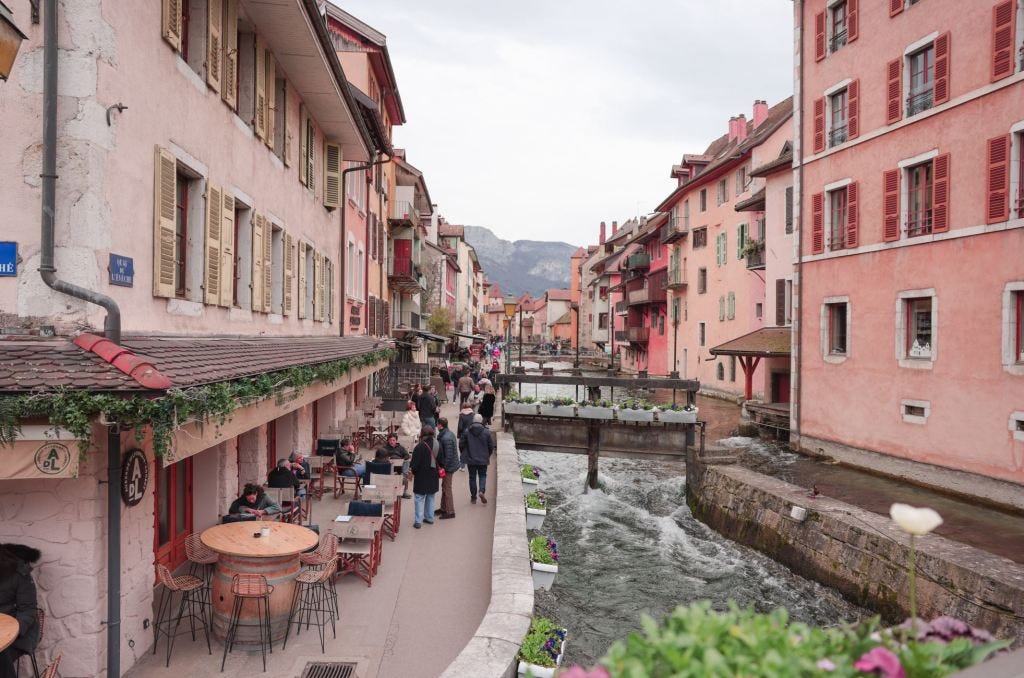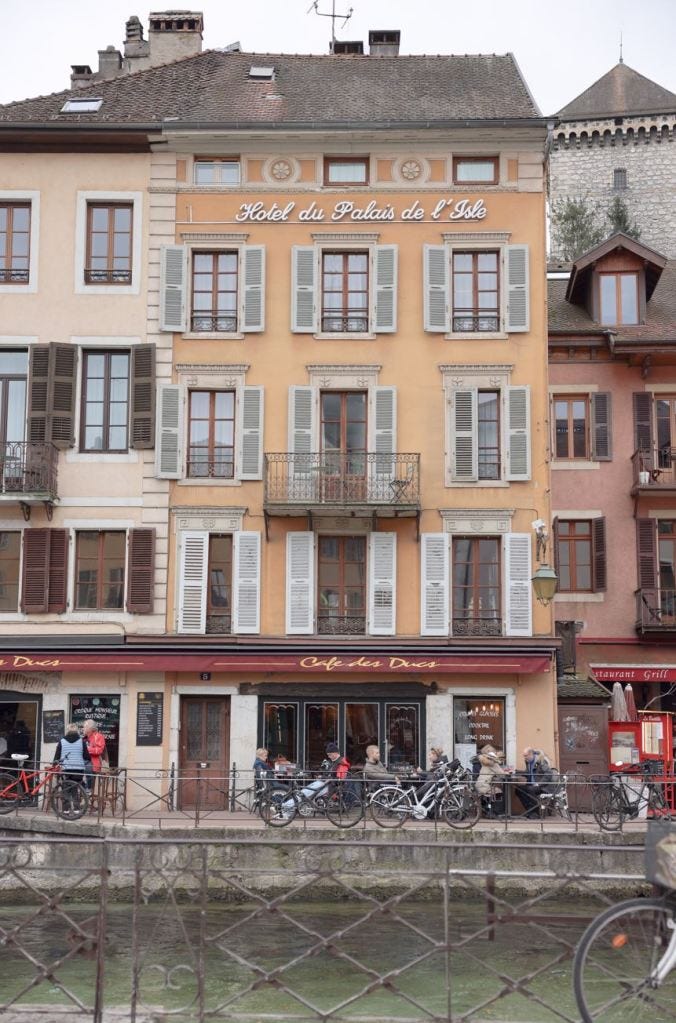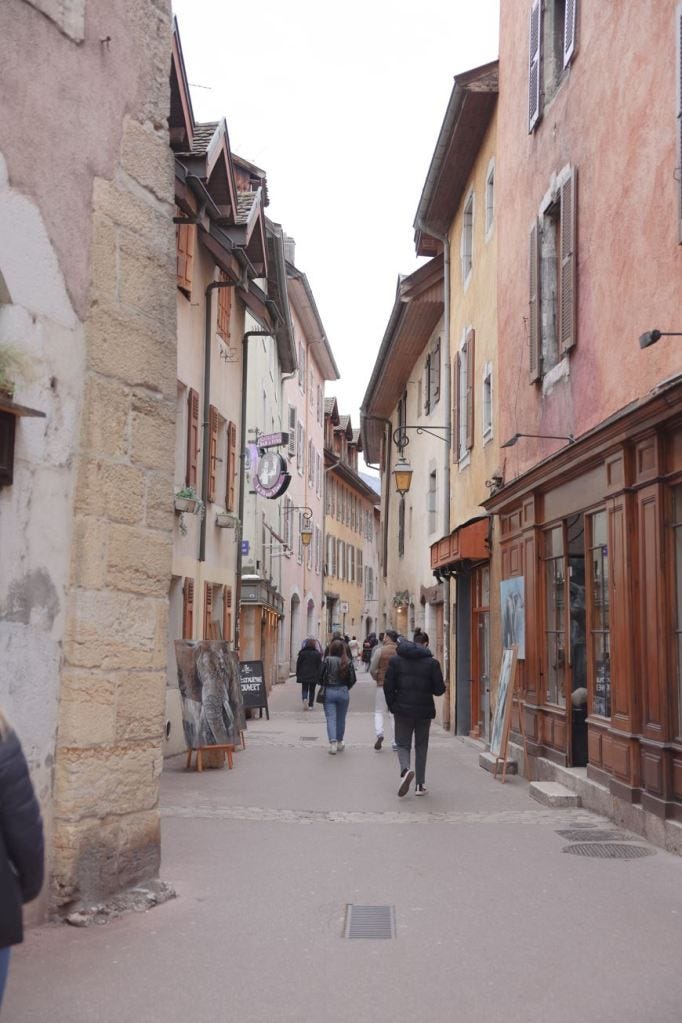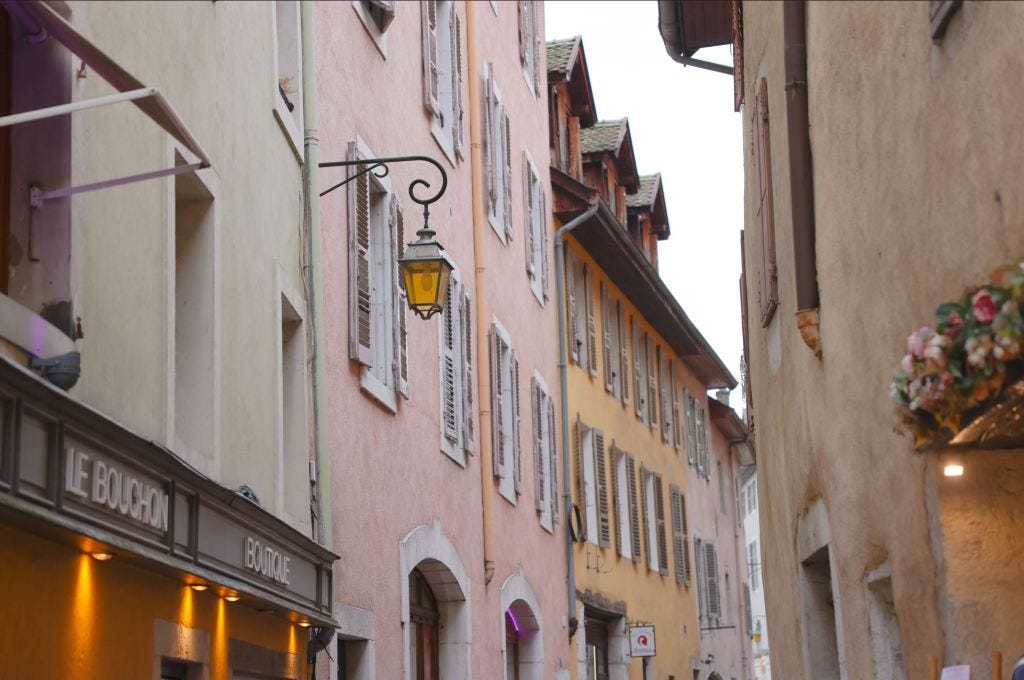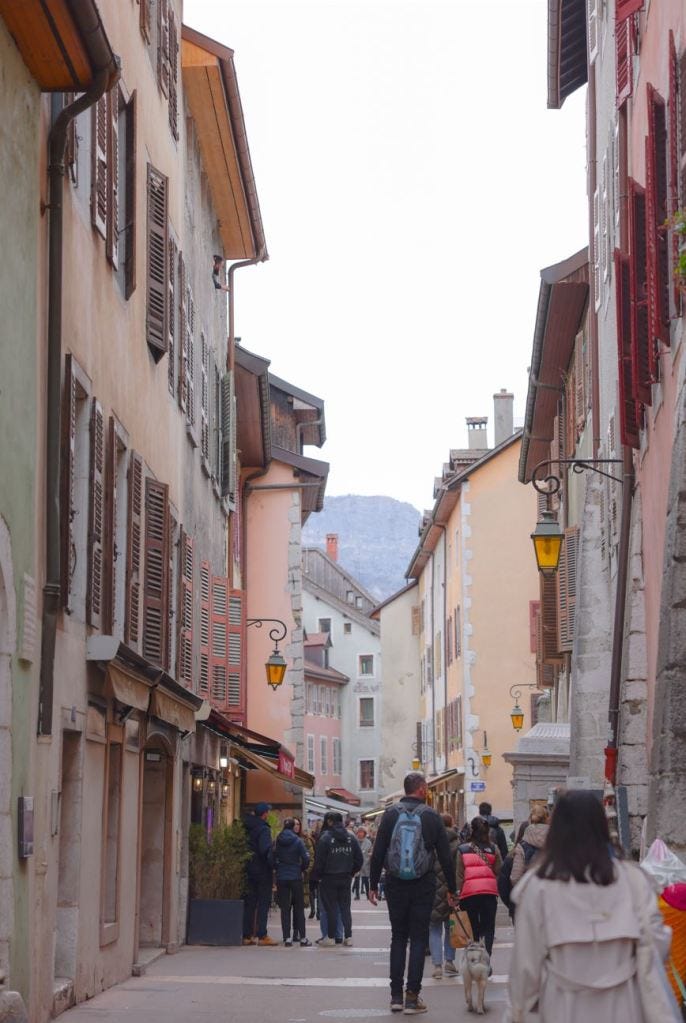Between lake and mountains, the medieval historic center of Annecy, called « the Venice of the Alps is an invitation to stroll and explore.
The Venice of the Alps
With its cobbled streets, colorful buildings and emblematic buildings, the Venice of the Alps is a city rich in heritage. At the bend of the canals, let yourself be told about the riches of the past.
The fortified town originally named “Boutae” – then “Annecy-le-Neuf” before being “le Vieil Annecy” – can pride itself on having one of the oldest pasts, including important remains of “lake villages” dating from the Neolithic era (-4000 BC).
The settlement of craftmen during the Middle Ages
In the Middle Ages, many craftsmen settled on the banks of the Thiou river and took advantage of its driving force. On both sides, feudal lords established themselves as well as the Count of Geneva in Annecy. Then followed the integration of the territory of Genevois into the Duchy of Savoy, the creation of the prerogative of Genevois, the wars of religion, the accession of François de Sales to the episcopal see or even the attachment of Savoy to France which are all events that transformed the city of Annecy.
Between historical monuments and canals
As you stroll around, you will be able to feel in its architecture this unfolding of history which gives Annecy all its charm. Between historical monuments and canals, along the narrow streets or under its medieval arcades, the old town invites you to take a stroll through the corridors of time…
In the 12th century, artisans abandoned Annecy-le-Vieux – a former center of life located on the heights of a hill – and settled on the banks of the Thiou near the lake. They thus founded Annecy-le-Neuf.
Le Chateau Musée
Built by the counts of Geneva to protect this new town of Annecy-le-Neuf, the castle was bought by Savoy in 1401, to become the residence of the Dukes of Genevois-Nemours in the 16th century.
It served as barracks during the Spanish occupation at the end of the 17th century, then was declared a national asset by housing the Republican & Imperial armies and retained this function until the Second World War.
In 1952, many homeless people invaded the Château, until the commune of Annecy bought it and restored it the following year. Today, it houses the Château Museum and the Regional Observatory of Alpine Lakes (ORLA).
The canals and the Thiou
The canals enliven the old district, bringing it a freshness and life that lovers of the picturesque do not fail to appreciate. It is not uncommon to see artists setting up their easel there !
You should know that it is above all one of the elements that shaped the city.





